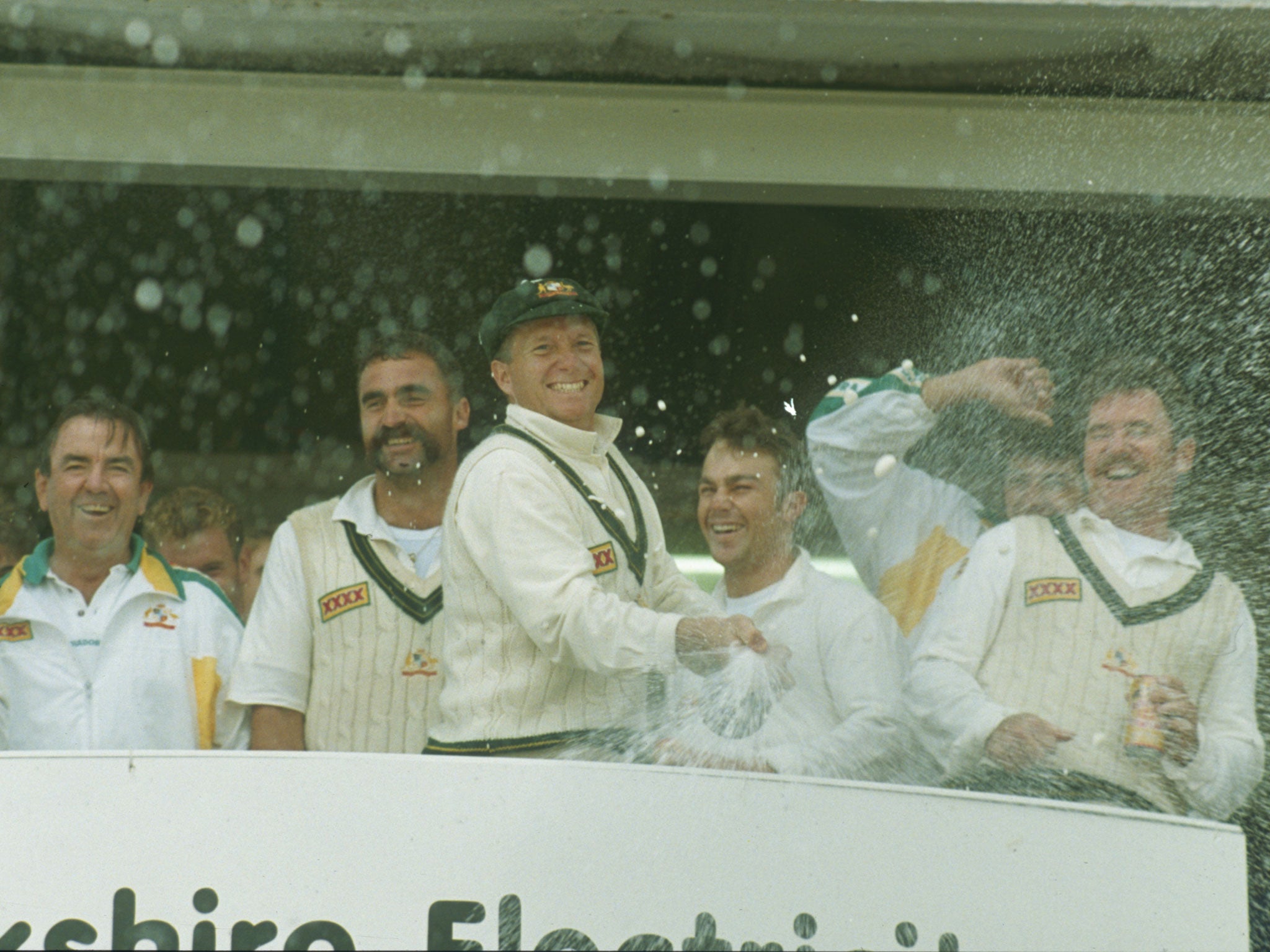1993 v 2013: The great divide
Twenty years ago Australia were on the verge of greatness but today... Stephen Brenkley compares the tourists then and now

2013: the Third Test between England and Australia starts at Old Trafford on Thursday and an England win clinches the Ashes.
1993: At the end of the Test match at Lord's 20 years ago, Australia were about to start a lenghty period of world domination.
The comparison does not make easy reading for this year's tourists. Twenty years ago, the Australians, below, were on the verge of greatness. Now they seem to have little idea where they are going. If nothing else, it might confirm that sport is cyclical.
Here we look at six areas where comparisons of collective or individual form offer little succour to the beleaguered Australians.
The bowling is not as potent as it could be
Bowling is usually reckoned to be the strong suit of the 2013 tourists, but it has still failed to keep them in the game. James Pattinson, the fastest of the present crop, has gone home with a stress fracture to the back which may have been caused by his having to bowl in two innings close together after the Australia batsmen failed at Lord's.
The leading bowler this year is Peter Siddle, whose 23 wickets have come at 29.09 runs apiece. Pattinson's 16 have cost 34.81 each, Nathan Lyons's 17, 40.88 and Mitchell Starc's 11, 41.36.
Three bowlers did most of the work in early 1993. Shane Warne, who was just making his mark – remember the ball of the century at Old Trafford, his first in an Ashes Test, which bowled Mike Gatting and will doubtless be replayed again this week? He had 35 wickets at 21.37. Merv Hughes had 38 at 23.18, Craig McDermott 21 at 38.43. These are telling differences.
The struggle to build partnerships
Teams need partnerships to prosper. In their 14 Test innings this year, Australia have had a total of only six century stands, one for the first wicket, one – thanks to Ashton Agar – for the 10th.
It is a damning state of affairs which can be summed up by the slender difference between the first and the last wickets. The opening partnerships this year have put on a total of 529 runs at an average of 37.79 (compare that to the 1993 vintage of 784 at 65.33). The 10th-wicket pair has batted 13 times in all and scored 497 runs at a higher average of 45.18. Indeed, the 10th wicket is Australia's most productive at present and only one other wicket has an average partnership above 30, the fourth making it at 30.14.
The lack of hundreds
By the end of the Second Test in 1993, Australia had played eight Tests in the year. In 2013 they have played seven. In 1993, five players had scored a total of six centuries, three at Lord's in a total of 632-4 dec.
In 2013 they have scored only two hundreds, none in this series and one by Matthew Wade, not currently in the side. They are the only Test team this year whose top four have not managed a century. The only batsman still in the side to have scored a Test hundred this year is Michael Clarke. In 1993, four players averaged 43 or more. Clarke averages 38.20 this year, the rest are below 30.
Chopping and changing the side
While it does not yet compare with England's use of 24 players in the 1993 series (after 29 in 1989), Australia have already used 22 players in seven Tests this year. On Thursday, James Faulkner could make his debut. Twenty years ago, in the first eight Tests they picked 17 players; seven played every game, another one played seven. Only Peter Siddle and Phil Hughes have played in all seven this year, two more have played six.
Opponents are scoring more runs and taking more wickets
Until they redress the balance, Australia will continue to lose. After the Lord's Test in 1993 they had scored 3,874 runs in the year for the loss of 108 wickets, an average of 35.87, and conceded 3,827 runs while taking 132 wickets, an average of 28.99. This year it is the other way round. They have made 3,558 runs for 133 wickets, an average of 26.75, and conceded 4,062 for 107, an average of 37.96.
The losing streak
Australia have now lost six consecutive Tests. No Australia team had done so since 1984, when Kim Hughes's side were steamrollered by West Indies. Hughes famously broke down in tears at a press conference where he resigned the captaincy after the fifth loss. Allan Border took over and West Indies won the next match too, before the decline was halted with a draw and then a victory. What Australia fear above all now is a seventh successive defeat.
Only once before has that happened – between March 1885 and February 1888 – all against England, starting at Melbourne and continuing in England 15 months later at Old Trafford. They are on the cusp of unwanted history.
Now for the good news
They are hitting more boundaries. They have scored 22 sixes and 386 fours this year. In 1993 they could manage only 16 sixes and 374 fours.
Join our commenting forum
Join thought-provoking conversations, follow other Independent readers and see their replies
Comments